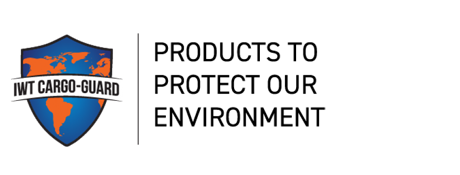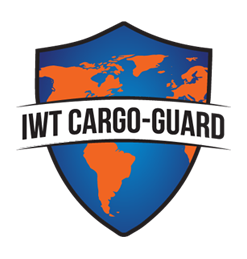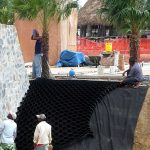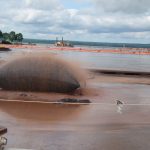Comparing Ground Stabilization Fabric: Woven VS Nonwoven
If you’re looking for effective ground stabilization fabric, there is no better option than geotextiles. Geotextiles are created from chemically resistant synthetic fibers to prevent biodegrading. They are commonly used in civil construction projects for soil stabilization purposes for roads, landfills, and drainage structures. However, did you know that there are two major types of geotextile fabric: woven and nonwoven? Woven and nonwoven geotextile fabrics each serve varying functions and can be applied in a multitude of ways. Let’s compare.
What Are Geotextiles?
Geotextiles are produced from chemically-resistant synthetic fibers that are knitted or matted together into a flexible, porous fabric. They are often used for the following functions:
- Separation – Geotextiles prevent the mixing of two layers of soil having different particle sizes.
- Filtration – Geotextiles retain fine particles while allowing water to flow through, acting as a filter.
- Drainage – Geotexiltes gather and discharge liquids or gasses not functionally required by the structure.
- Reinforcement – Geotextiles provide a tensile element to the soil matric, providing more competent structural material.
- Protection – Geotextiles shield synthetic membranes from puncture, abrasion, and perforation.
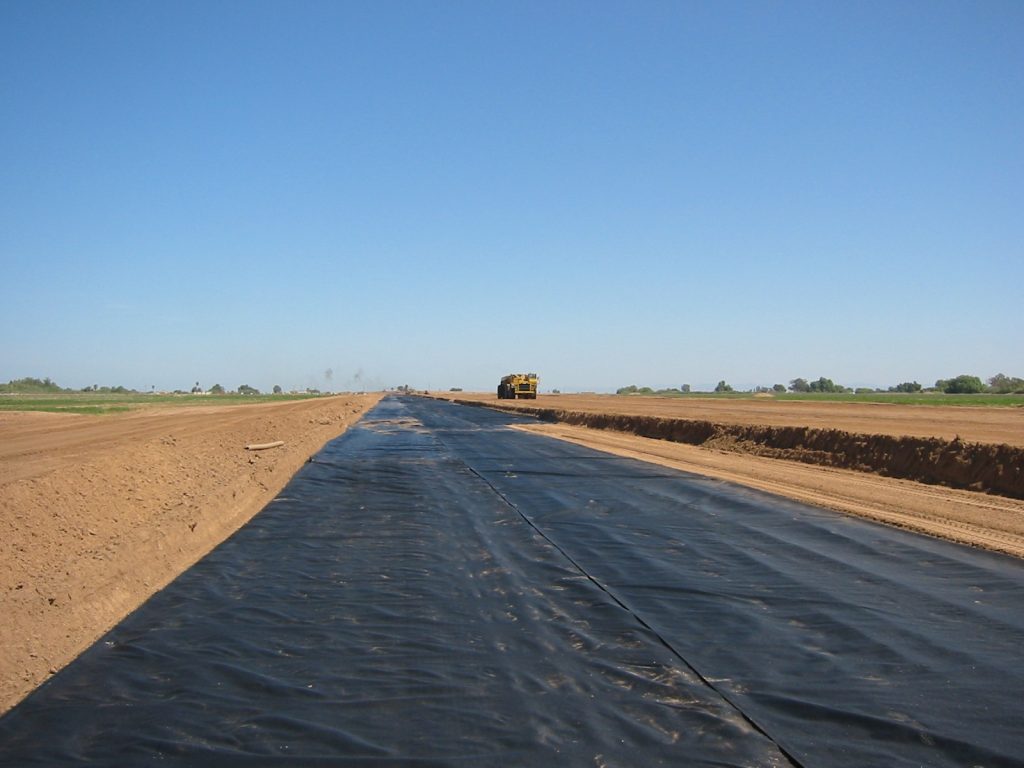
What is Woven Geotextile Fabric?
Let’s start with woven geotextile ground stabilization fabric. It is constructed by weaving together polypropylene or polyester fibers. Regardless of the material, the weaving technique is consistent. This ensures that the woven fabric is strong. When it comes to woven geotextiles, there are many different types, including monofilament geotextiles and high-strength geotextiles. The high-strength woven geotextile fabrics are optimal for separation and reinforcement applications including road construction, parking lots, and highways. Monofilament woven geotextiles, on the other hand, are specifically designed for drainage and filtration applications. In other words, the fibers used and the way they are woven together determine the properties of woven geotextiles. Whether you’re looking for reinforcement applications such as walls and embankments or separation and filtration applications, woven geotextile fabric can get the job done.
Applications
When it comes to woven ground stabilization fabric, there are several significant applications. Correctly chosen and installed woven geotextile fabrics will extend the life of your project, deliver improved performance, and reduce long-term maintenance costs. The following are suitable applications for woven geotextiles:
- Construction entrances and haul roads
- Beneath driveways
- Parking lots
- Highway embankments
Depending on the construction of woven geotextiles, they offer a host of benefits that cover a multitude of applications. These include:
- Reinforcement Strength – they have high-tensile properties
- Separation and Filtration – they provide superior filtration and flow characteristics
- Soil and Base Course Interaction – they exhibit excellent soil and base confinement
- Durability – they effectively resist damage from installation stress
- Variety – they come in several sizes to fit project requirements
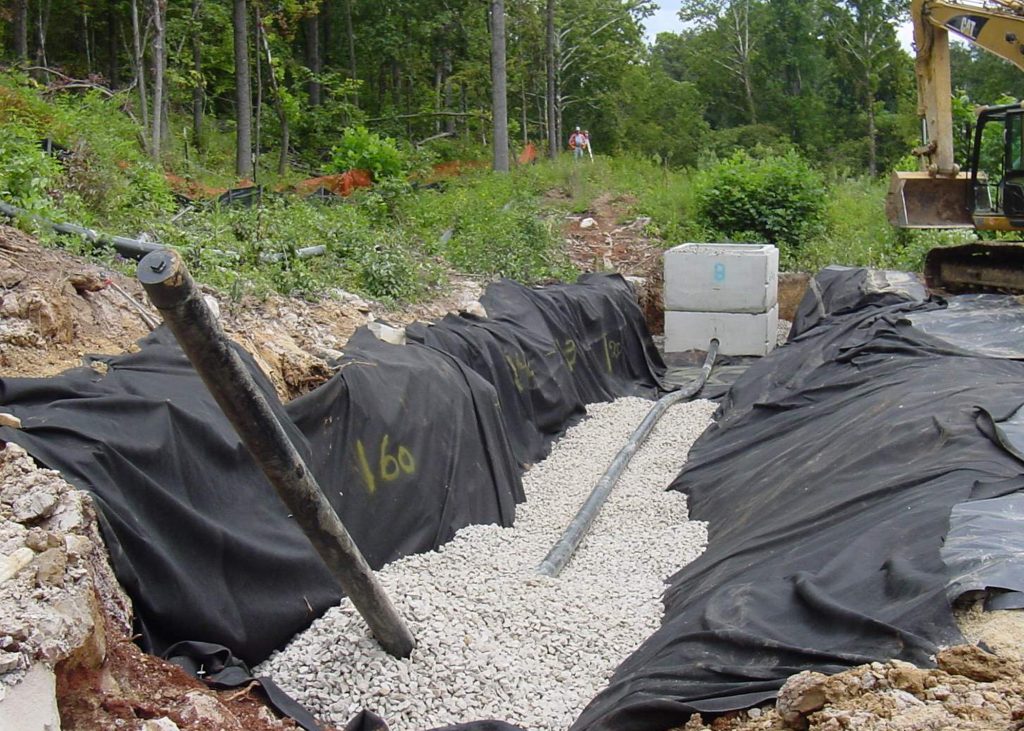
What is Nonwoven Geotextile Fabric?
Now let’s talk about nonwoven geotextile ground stabilization fabric. It is constructed from polypropylene or polyester fibers but resembles a more felt-like material. Unlike woven geotextiles that are “crisscrossed” together, nonwoven geotextiles are needle punched and heat set. This limits their tensile strength yet makes them more permeable. For this reason, nonwoven geotextiles are perfect for drainage and filtration projects. They can also be used in water infrastructure projects such as permanent erosion control and roadway separation. Nonwoven geotextile fabric is typically categorized by weight and is available in light-weight, medium-weight, and ultra-heavy-weight sizes.
Applications
Nonwoven geotextile fabric is the best solution when you need soil separation and permeability or are working on a drainage project. Although it is not as strong as woven geotextile fabric, there are plenty of applications to consider:
- Soil separation projects
- Wrapping French drains
- Beneath rock riprap revetment
- Sub-surface drainage solutions
Depending on the construction of nonwoven geotextiles, they offer many solutions and provide innumerable benefits, including:
- Construction – they can easily conform to ground or trench surfaces
- Strength – they can withstand installation stresses and are puncture and tear-resistant
- Drainage – they allow high water flow rates while providing superior soil retention
- Environmental – they are chemically stable in aggressive environments
- Cost-Effective – they provide a cost-effect alternative to graded aggregate filters
The Difference Between Woven and Nonwoven Geotextile Fabric
As you can see, there are a few major differences between woven and nonwoven ground stabilization fabric. Woven geotextiles are optimal for reinforcement and stabilization applications, while nonwoven geotextiles are typically superior when it comes to separation, filtration, and drainage. However, both woven and nonwoven geotextile fabrics can be constructed with a wide variety of applications in mind.
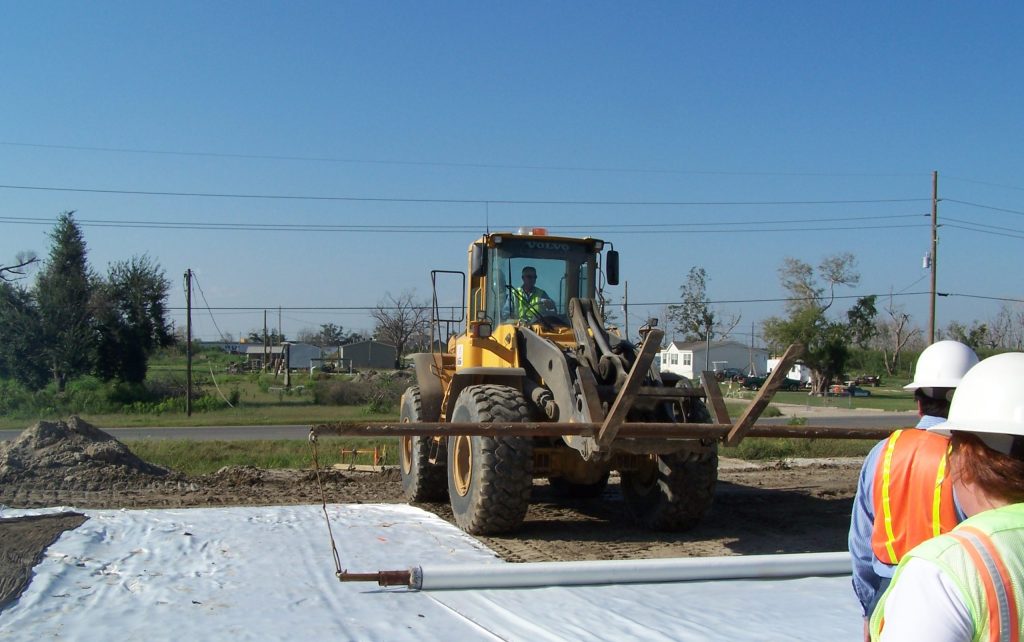
For Ground Stabilization Fabric, Choose IWT Cargo-Guard
Whether you’re looking for woven or nonwoven geotextiles, IWT Cargo-Guard has the products you need. Our mission has always been to assist our clients in winning business by providing the most cost-effective products necessary for their job site. From drainage and filtration to soil stabilization and base reinforcement, our products cover it all while protecting our environment. Reach out to our team today to get started. We can’t wait to hear from you.
